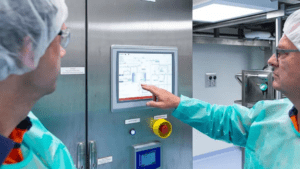Client
Defence Client in (Australian Munitions)
Location
NSW, Australia
Core Capabilities
- Project management
- Process design
- Mechanical design of vessels and pipework
- Structural and Civil Design
- Electrical and instrumentation design
- 3D modelling
- Dangerous goods and storage and handling
- Hazardous Area Classification
Project Summary
Synertec’s client operates a propellant and explosives manufacturing facility at in NSW Australia. This facility is the biggest producer of explosives and propellants for munitions for the Australian armed forces. Synertec have undertaken the new engineering design for a number of key upgrade projects in recent years, including new facilities for the storage and handling of both concentrated and waste acids, and for large new liquid ammonia storage facility.
The Challenges
The site is a Major Hazard Facility, with all projects needing to consider risk reduction and management from inception. Large volumes of strong acids are required for various propellant and explosive processes on the site, requiring rigorous design standards, specialty materials and comprehensive Safety in Design practices. Storage of large quantities of anhydrous ammonia on site is also required as a feed-stock for explosive manufacture. Thales require upgraded storages with increased capacity and safety considerations, and to be designed, installed and commissioned without disruption to existing production.
Synertec’s Scope
Synertec Process, Mechanical and Electrical engineers worked closely with the client’s project teams to develop new storage facility locations and layouts, and to define the required capacity and functionality. Synertec then completed detail design including:
- Design and specification of tanks and pressure vessels
- Structural and Civil Design
- Facility layouts
- Hazardous area assessments
- Equipment selection including pumps, valves, compressors and instrumentation
- Electrical and instrumentation design and equipment selection
- Process and Functional Descriptions
- HAZOP studies
- 3D model and piping isometric drawings
- Detailed specifications and datasheets
- Demolition Scope of Works




